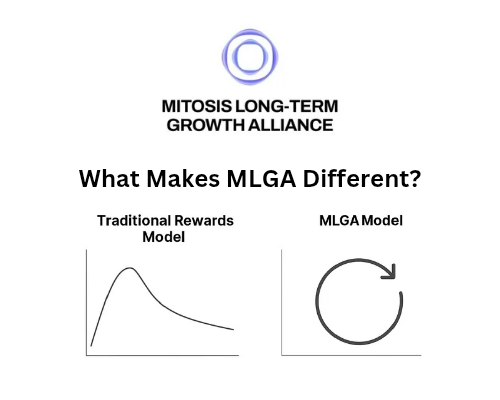Smart Contracts: Architecture, Security, and DeFi Impact Analysis

Introduction: Understanding Smart Contracts
Smart contracts are self-executing programs that automate the execution of agreements, with terms directly written into code and stored on a blockchain. This technology, first conceptualized by Nick Szabo in 1994, draws inspiration from vending machines, where inputs trigger automatic outputs.
Szabo envisioned digital contracts enforceable by software rather than legal systems, a vision realized with the advent of blockchain technology, particularly with Ethereum launched in 2015. Ethereum introduced a platform for deploying smart contracts using Solidity, a Turing-complete programming language, enabling complex logic beyond simple transactions.
Other blockchains, like Binance Smart Chain and Cardano, have since adopted smart contract capabilities, each offering unique features. Smart contracts are integral to blockchain ecosystems, with over $200 billion in total value locked in DeFi protocols, highlighting their significance CoinMarketCap: A Dive Into Smart Contracts and DeFi.
Architecture: Building Smart Contracts
The architecture of smart contracts is designed for functionality and interaction on a blockchain, involving several key components:
- Contract Code: Written in languages like Solidity for Ethereum, this code defines the contract's logic, including rules and conditions. For example, a lending contract might specify interest rates and repayment terms. Developer-friendly languages include Solidity and Vyper, with more details available at Smart contract languages.
- State Variables: These store data, such as token balances or ownership records, managed by the contract. They are crucial for maintaining the contract's state across transactions.
- Functions: Executable parts of the contract, like transferring tokens or executing trades, triggered by transactions sent to the contract's address. The maximum contract size is 24KB, extendable using The Diamond Pattern.
- Events: Logs of actions, such as a token transfer, emitted for off-chain applications to react, enhancing interoperability.
Deployment involves compiling the code into bytecode, executed by the blockchain's virtual machine, such as Ethereum's EVM. Tools like Remix or Truffle facilitate this process. Once deployed, the contract resides at a unique address, interacted with via transactions broadcast to the network, verified by nodes, and added to blocks, ensuring consensus and immutability. Anyone can deploy with enough ETH, but deployment is a transaction requiring gas, with higher costs than simple ETH transfers Smart contract languages.
Smart contracts are designed for modularity, using patterns like proxy contracts for upgradability, allowing logic updates without changing the address, and libraries for reusable code, reducing redundancy. The architecture must consider blockchain limitations, such as gas costs and block size, to ensure efficiency. Composability, where contracts call others, enables complex decentralized applications (dApps), like decentralized exchanges, built on interconnected contracts Wikipedia: Smart contract.
Security: Safeguarding Smart Contracts
Given their immutable nature, security is paramount for smart contracts. Once deployed, any vulnerabilities can lead to irreversible losses, as seen in high-profile hacks. Common risks include:
- Reentrancy Attacks: A contract calls another before updating its state, allowing the called contract to reenter and exploit, as in the 2016 DAO hack, draining $50 million in ether. Mitigation involves the "checks-effects-interactions" pattern, updating state before external calls.
- Arithmetic Errors: Overflows and underflows can cause unexpected behavior, like adding large numbers wrapping to zero. Safe math libraries, like OpenZeppelin's, prevent this by checking bounds.
- Timestamp Dependence: Relying on block timestamps for critical operations risks manipulation by miners, within a 15-second window on Ethereum. Alternatives include using block numbers for time-based logic.
- Access Control Issues: Failing to restrict function access can allow unauthorized actions. Using "msg.sender" instead of "tx.origin" ensures proper authorization.
- Short Address Attacks: Incorrect "transfer" function usage can send funds to unintended addresses, mitigated by proper input validation.
Best practices include:
- Conducting thorough testing, including unit tests, integration tests, and security audits using tools like MythX or Oyente.
- Formal verification, using mathematical proofs to ensure correctness, with tools like K Framework.
- Keeping contracts simple to reduce complexity, a known vulnerability source.
- Regular audits by third parties, essential before deployment, given the immutable nature.
The OWASP Smart Contract Top 10, updated in 2025, lists critical vulnerabilities, integrating data from SolidityScan’s Web3HackHub and Peter Kacherginsky’s “Top 10 DeFi Attack Vectors - 2024,” documenting over $1.42 billion in losses OWASP: Smart Contract Top 10. Despite these measures, incidents like the 2021 Cream Finance hack, where a flash loan attack stole over $100 million, underscore ongoing challenges.
Impact on DeFi: Revolutionizing Finance
Decentralized Finance (DeFi) leverages smart contracts to provide financial services without intermediaries, transforming traditional finance. As of Q2 of 2025, DeFi protocols have locked over $200 billion in value, driven by smart contracts enabling:
- Lending and Borrowing: Platforms like Aave and Compound use smart contracts to automate loans, managing interest rates, collateral, and liquidations. Users lend cryptocurrencies, earning interest, while borrowers access funds by providing assets, all governed by code.
- Decentralized Exchanges (DEXs): Uniswap and SushiSwap employ automated market makers (AMMs), smart contracts maintaining liquidity pools and calculating exchange rates via formulas like the constant product, facilitating token swaps without central authorities.
- Stablecoins: DAI, managed by MakerDAO’s smart contracts, maintains a US dollar peg through collateralized debt positions, automating minting and burning processes.
- Yield Farming and Liquidity Mining: Users provide liquidity to protocols, earning rewards distributed by smart contracts based on contributions, incentivizing participation.
Benefits include:
- Transparency: All transactions are on-chain, visible to anyone, enhancing trust.
- Security: Cryptography and consensus ensure integrity, though vulnerabilities remain a risk.
- Efficiency: 24/7 execution without intermediaries reduces costs and delays, as seen in peer-to-peer lending.
- Accessibility: Open to anyone with internet, democratizing finance, especially for the unbanked.
Challenges include:
- Scalability: Ethereum’s congestion and high gas fees during peak usage, mitigated by Layer 2 solutions like Arbitrum.
- Security Risks: Hacks like the 2021 Poly Network exploit, losing $600 million, highlight vulnerabilities. Robust audits and formal verification are crucial.
- Regulatory Uncertainty: DeFi’s decentralized nature raises compliance questions, with ongoing debates on global regulation.
Despite these, DeFi’s potential is vast, with projections suggesting growth into trillions, driven by smart contracts’ ability to create inclusive financial systems CoinMarketCap: A Dive Into Smart Contracts and DeFi.
Conclusion
Smart contracts, with their robust architecture and critical security measures, are reshaping industries, particularly DeFi. Their ability to automate, secure, and decentralize agreements offers significant advantages, but challenges like scalability and security require ongoing innovation. As blockchain technology evolves, smart contracts will likely expand into new domains, ensuring their role in creating trustless, efficient systems, provided security and adoption hurdles are addressed.
Key Citations
- What Are Smart Contracts on the Blockchain and How Do They Work
- Introduction to smart contracts
- Smart contract
- Smart Contract Top 10
- Smart Contract Security Developer's Guide
- A Dive Into Smart Contracts and DeFi
- Decentralized finance
- What Are Smart Contracts on Blockchain
- What Are Smart Contracts
- Smart Contracts in Blockchain
MITOSIS official links:
GLOSSARY
Mitosis University
WEBSITE
X (Formerly Twitter)
DISCORD
DOCS

Comments ()